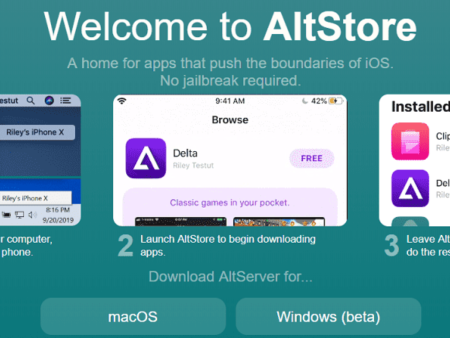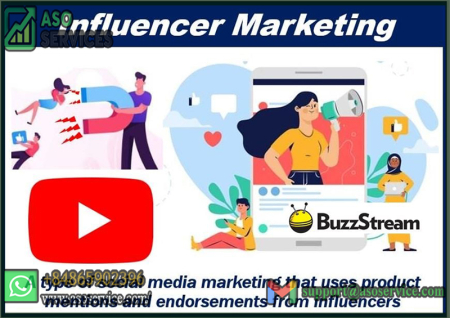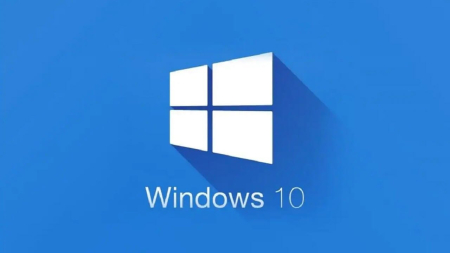How to Publish Your Android App A Comprehensive Guide
-
10/07/2023
-
827
-
0

Are you an aspiring app developer looking to make your mark in the Android world? Publishing an Android app can be an exciting and rewarding experience, but it's important to navigate the process with confidence. In this comprehensive guide, we will walk you through the step-by-step process of how to publish an Android app, covering everything from preparing your app for release to maximizing its visibility on the Google Play Store. So, let's dive right in and explore the ins and outs of app publication!
Preparing Your App for Release

Understanding the Android App Publishing Process
Before you embark on the journey of publishing your Android app, it's crucial to understand the overall process involved. Familiarize yourself with the terminology, requirements, and guidelines set by Google Play Store. This knowledge will help you navigate potential pitfalls and ensure a smooth submission process.
Developing a Solid App Marketing Strategy
A successful app launch requires more than just a great product—it demands a well-thought-out marketing strategy. Start by identifying your target audience and conducting market research to position your app effectively. Craft a compelling app description, create engaging screenshots and videos, and leverage social media platforms to generate buzz around your app.
Optimizing Your App for Performance and User Experience
To make a lasting impression on users, your app needs to deliver a seamless experience. Prioritize performance optimization by eliminating bugs, optimizing code, and ensuring backward compatibility across different Android versions. Additionally, focus on creating an intuitive user interface, implementing smooth navigation, and incorporating user feedback into your design decisions.
Submitting Your App to the Google Play Store

Creating a Developer Account
To publish an Android app on the Google Play Store, you need to create a developer account. Follow these steps to set up your account:
- Visit the Google Play Console website.
- Sign in with your Google account or create a new one.
- Agree to the terms and conditions and provide the necessary details, such as your developer name and location.
- Pay the one-time registration fee, which grants you access to publish apps on the platform.
Preparing Your App Listing
Your app's listing on the Google Play Store is its virtual storefront, so it's essential to make it visually appealing and informative. Consider the following elements when preparing your app listing:
Crafting an Attention-Grabbing App Icon
Your app icon is the first visual element users encounter, and it plays a crucial role in attracting their attention. Design an eye-catching, distinctive icon that accurately represents your app's purpose and stands out among competitors.
Writing an Engaging App Description
The app description is your opportunity to communicate the value proposition of your app effectively. Use persuasive language, highlight key features, and convey how your app solves a problem or enhances users' lives. Remember to incorporate relevant keywords naturally throughout the description to improve discoverability.
Uploading Your App Bundle or APK
To make your app available for download, you must upload either an app bundle (preferred) or an APK file to the Google Play Console. Follow these steps to complete the process:
- Build a signed release version of your app using Android Studio or another compatible development environment.
- Generate either an app bundle or an APK file based on your preference and the publishing requirements.
- Sign in to the Google Play Console and navigate to the "App releases" tab.
- Select "Create new release" and follow the prompts to upload your app bundle or APK file. Provide necessary information such as release notes, target audience, and supported devices.
Testing Your App Before Release
Before making your app available to the public, thorough testing is crucial to ensure a smooth user experience. Leverage tools like Firebase Test Lab to perform automated tests across various device configurations, identify and fix bugs, and gather valuable feedback from real users.
Maximizing Your App's Visibility and Success

Implementing App Store Optimization (ASO)
App Store Optimization (ASO) is the practice of optimizing your app's visibility within the Google Play Store. By strategically incorporating relevant keywords in your app title, description, and metadata, you can improve your app's discoverability and attract more organic downloads. Regularly monitor your app's performance and make data-driven adjustments to enhance its visibility.
Encouraging User Reviews and Ratings
Positive user reviews and high ratings are critical for building trust and encouraging new users to download your app. Prompt satisfied users to leave a review by integrating a simple and unobtrusive rating system within your app. Respond promptly and professionally to user feedback, addressing concerns and demonstrating your commitment to improving the app experience.
Promoting Your App through Various Channels
To gain traction and expand your user base, actively promote your app across various channels. Leverage social media platforms, digital marketing campaigns, content creation, and influencer partnerships to generate buzz and increase awareness about your app. Engage with your target audience, listen to their feedback, and adapt your marketing strategy accordingly.
Leveraging User Acquisition and Retention Strategies
User acquisition and retention strategies are vital for the long-term success of your app. Consider implementing the following tactics:
In-App Referral Programs
Encourage your existing users to refer friends and family to your app by offering incentives such as discounts or exclusive content. This can help you acquire new users while also enhancing user engagement and loyalty.
Push Notifications and Personalized Messaging
Utilize push notifications to keep users informed about updates, new features, and personalized offers. Tailor your messaging based on user preferences and behavior to provide a personalized experience that keeps users engaged and coming back to your app.
Analyzing User Data and Analytics
Leverage analytics tools to gain insights into user behavior, demographics, and usage patterns. Use this data to make informed decisions about app improvements, feature updates, and targeted marketing campaigns.
Monetizing Your App
While publishing an app is often driven by passion and creativity, it's also important to consider monetization strategies to sustain your efforts. Here are some popular methods of generating revenue from your Android app:
In-App Purchases
Offer premium features, digital goods, or additional content within your app that users can purchase. Implement a user-friendly purchasing flow and ensure that the value provided justifies the cost.
Advertisements
Integrate advertising networks like Google AdMob to display relevant ads within your app. Strive for a balance between user experience and ad placement to maximize revenue without compromising user satisfaction.
Subscription Model
Consider offering subscription-based access to exclusive content, features, or services within your app. This model provides a recurring revenue stream and fosters a loyal user base.
Frequently Asked Questions (FAQs)
Q1: How long does it take to publish an Android app on the Google Play Store?
Publishing an Android app on the Google Play Store typically takes around 2 to 7 days, depending on the review process. However, the duration can vary based on factors such as app complexity, adherence to guidelines, and potential resubmissions for updates or improvements.
A1: It's important to plan your app release timeline accordingly and account for potential delays during the review process. Ensure that your app meets all the requirements and guidelines to expedite the publication process.
Q2: Can I update my app after it has been published on the Google Play Store?
Yes, you can update your app even after it has been published on the Google Play Store. Regular updates are crucial for improving user experience, fixing bugs, introducing new features, and staying competitive in the market. Simply upload the updated version of your app through the Google Play Console, following the same submission process.
A2: Remember to communicate the changes and improvements to your users through release notes and engage them with the updates to maintain their interest and satisfaction.
Q3: Are there any specific size or format requirements for app icons and screenshots?
Yes, there are specific requirements for app icons and screenshots on the Google Play Store. App icons should be in a square format with dimensions of at least 512x512 pixels. Screenshots should have a minimum resolution of 320 pixels and a maximum aspect ratio of 2:1. It's advisable to follow the provided guidelines and create visually appealing assets that accurately represent your app.
A3: Taking the time to create high-quality app icons and screenshots helps attract users and provides a glimpse into the app's user interface and features.
Q4: How can I increase my app's visibility on the Google Play Store?
To increase your app's visibility, focus on implementing effective App Store Optimization (ASO) strategies. Optimize your app title, description, and metadata with relevant keywords to improve search rankings. Encourage positive user reviews and ratings to enhance credibility. Additionally, promote your app through various marketing channels and engage with your target audience on social media platforms.
A4: It's an ongoing process that requires continuous monitoring, analysis, and adjustments to stay ahead of the competition and maximize your app's visibility and reach.
Q5: Can I monetize my free Android app?
Yes, you can monetize a free Android app through various methods such as in-app purchases, advertisements, or implementing a subscription model. Choose the monetization strategy that best aligns with your app's features and target audience. Remember to strike a balance between generating revenue and providing a positive user experience.
A5: Experimentation and understanding your users' preferences are key to finding the right monetization approach for your app. Regularly evaluate your monetization strategy and make adjustments based on user feedback and market trends.
Conclusion

Publishing an Android app is an exciting journey that requires careful planning, attention to detail, and effective marketing strategies. By following the step-by-step process outlined in this comprehensive guide, you can navigate the complexities of app publication with confidence. Remember to optimize your app for performance and user experience, submit it to the Google Play Store with a compelling app listing, and leverage strategies to maximize its visibility and success. Additionally, consider implementing monetization methods to sustain your efforts and generate revenue from your app.
As you embark on this journey, stay committed to continuous improvement and adaptability. Listen to user feedback, analyze data, and make informed decisions to enhance your app's functionality, features, and overall user experience. Keep an eye on industry trends, stay updated with the latest developments in Android app development, and always strive to deliver value to your users.
With dedication, persistence, and a solid understanding of the app publishing process, you can successfully publish your Android app and make a mark in the thriving world of mobile applications. So, get ready to unleash your creativity, bring your app to life, and captivate the hearts of Android users worldwide!
























Leave a Reply
Your e-mail address will not be published. Required fields are marked *